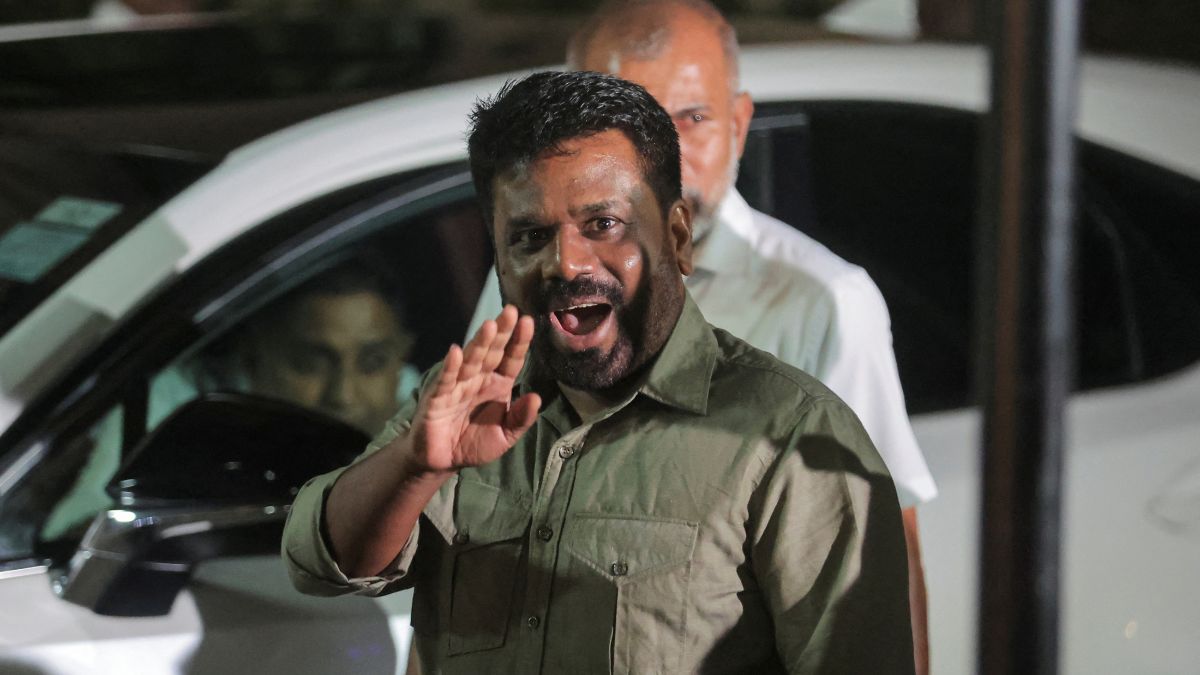After a historic first of second round of counting, the country of Sri Lanka now has a new president — Anura Kumara Dissanayake. The 55-year-old Marxist fended off competition from opposition leader Sajith Premadasa, while current President, Ranil Wikremesinghe trailed in third.
Dissanayake received 5,740,179 votes, followed by Premadasa with 4,530,902, Election Commission data showed.
Shortly after the second round of counting completed, Dissanayake, the leader of the Janatha Vimukthi Peramuna (JVP) party and head of the alliance named as National People’s Power, said on X, “This achievement is not the result of any single person’s work, but the collective effort of hundreds of thousands of you. Your commitment has brought us this far, and for that, I am deeply grateful. This victory belongs to all of us.”
“The millions of eyes filled with hope and expectation push us forward, and together, we stand ready to rewrite Sri Lankan history,” he added.
He will be sworn in today (September 23) after scoring a huge victory.
Dissanayake will have a tough time as president of Sri Lanka; he takes on the governance of the island country that is struggling to emerge from the economic crisis and a population that is desperate for change.
But who is Sri Lanka’s president-elect? What are his policies?
Dissanayake’s early life
A big part of 55-year-old Dissanayake’s charm is his roots — he was born to a middle-class in the village of Thambuttegama in Anuradhapura district, which is located around 170 km from the capital Colombo.
His parents, a daily-wage worker and a homemaker, managed to educate Dissanayake and he graduated with a science degree from the University of Kelaniya. In his college days, Dissanayake was involved in student politics.
A political start
His stint with college politics led him to join the JVP during its anti-government movement between the years of 1987 and 1989. This period saw the party leading an armed uprising against what the JVP called the imperialist and capitalist regime of Presidents JR Jayawardene and R Premadasa.
Some call it Sri Lanka’s bloodiest period; widespread killings and political assassinations were the norm then. In retaliation, the State brutally crushed the rebellion, which saw at least 60,000 people killed, including JVP founder Rohana Wijeweera.
In 1995, Dissanayake became the national organiser of the Socialist Students Association and was appointed to the central working committee of the JVP. Three years later, he became a member of the party’s political bureau.
It was in 2000 that Dissanayake became a member of parliament and 14 years after that he was appointed party chief. Soon after his appointment, he apologised for the party’s past crimes in an interview to the BBC. Notably, this was the first and the last time ever that the JVP apologised for the violence it had unleashed on Sri Lanka in its earlier avatar.
Anti-corruption and clean governance plank
During his campaign this time around, Dissanayake made a concentrated effort to appeal to different sections of society and his main plank is: to tackle corruption. With his Marxist ideology, he presented himself as a change-maker in the country.
“The people have endured these governments for a long time and are exhausted by the repeated failure of governance,” said Dissanayake. “The breakdown of law and order has left them vulnerable to underworld crime. The collapse of the economy has further victimised the population, while critical sectors like education, health and transport have deteriorated. As a result, people are desperate to break free from their victimhood and helplessness. This desire for change is what draws them to us.”
And it seems that this has echoed with the people, especially university students, teachers and the working class, who have extended support to him.
Besides his anti-corruption plank, Dissanayake has vowed to renegotiate terms of the International Monetary Fund (IMF) economic programme. “The implementation of the IMF programme has caused significant hardship for the people. That is why we are seeking a new mandate from the public to renegotiate with the IMF,” he was quoted as telling The Week. “In pursuing economic goals, we must advance in a way that alleviates pressure on the public… We aim to make the necessary changes gradually to ensure long-term stability.”
Dissanayake has also said that he would selectively welcome foreign investors, if he was to win the election. He has also pledged to scrap Sri Lanka’s presidential system and return to the British-style parliamentary democracy, which existed until 1978.
Challenges for Dissanayake
While the 55-year-old Marxist is a popular choice, largely owing to his promise of cutting taxes, it won’t be smooth sailing for Dissanayake.
Dissanayake enjoys support with the students and the working class. However, he is unable to find favour with the elites of the country.
The party’s violent past is another hurdle for Dissanayake. Some have expressed concern that under Dissanayake’s presidency, insurgency and violence would return to the lands. Many question his lack of accountability with Sri Lankan writer analyst Kusal Perera telling Al Jazeera, “He has never publicly condemned any ethno-racist extremism”.
Perhaps, one of his biggest concerns though is his strained ties with India, and the war-affected Tamils in the country. The JVP has also been traditionally seen as a pro-Chinese party. Moreover, his party has been seen as excluding Tamils and Muslims from all realms of activity.
However, for now, Sri Lanka can bask in the news that they have a new president. However, what lies ahead for the country as well as Dissanayake remains unknown.
With inputs from agencies


)

)
)
)
)
)
)
)
)



